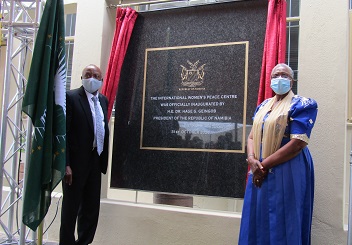
Medical waste consolidated at new facility
A new modern Health Care Risk Waste (HRCW) treatment facility to cater for medical waste from state and private hospitals will soon be built in the capital.
The proposed facility is a health care risk waste facility, fuel depot with a total fuel capacity of 78,000 litres and offices, that will process medical waste from hospitals in Rehoboth, Okahanja and Windhoek. It is aimed at servicing private hospitals and clinics as well as serving as a back up for other medical centres as and when required.
Environmental Consultant, Engineering and Project Management company, Matrix Consulting Services’ public participation consultant this week told the Economist that the facility will be different from the Katutura hospital incinerator as it will dispose of the waste with manageable pollution emissions. It has been designed and will be built with the latest technology to handle the increased volumes of HCRW that are generated from the hospitals in Rehoboth, Okahanja and Windhoek.The facility will be located near the Namibia Traffic Information System (NATIS) centre in the Northern Industrial Area. Nomasonto Mnisi of Parsons Brinckerhoff Africa which is the appointed Environmental and Social Consultant of the City of Windhoek said a study is currently under way to determine the impact that the project will have on the environment and the surrounding buildings. “Once a cumulative assessment of the impacts is done the company will advise the developer with the best practicable environmental social and economic options”.A project registration letter has been submitted to the department of Environment and a public meeting to discuss the impacts of the project on the environment was hosted last month.Costs to build, operate and maintain the facility will be known when the feasibility study is completed and more detail about the facility will be available once the design phase has been completed.The facility is intended to resolve health care risk waste challenges that residents are facing in both Rehoboth and Okahandja. These challenges are posed by issues such as population growth and the fact that existing facilities have either reached the end of their life spans or are mismanaged.










































